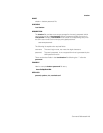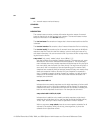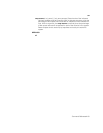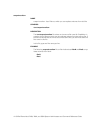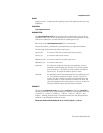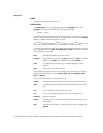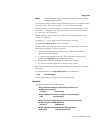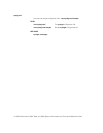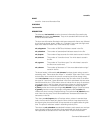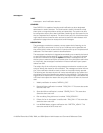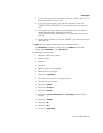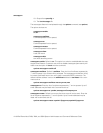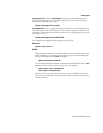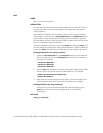
Command ReferenceA-157
NAME
zoneinfo - time zone information files
SYNOPSIS
/etc/zoneinfo
DESCRIPTION
The directory /etc/zoneinfo contains time zone information files used by the
timezone command (see timezone). They are in standard UNIX time zone file
format as described below.
The time zone information files begin with bytes reserved for future use, followed
by six four-byte signed values, written in a standard byte order (the high-order
byte of the value is written first). These values are, in order:
tzh_ttisgmtcnt The number of GMT/local indicators stored in the file.
tzh_ttisstdcnt The number of standard/wall indicators stored in the file.
tzh_leapcnt The number of leap seconds for which data is stored in the file.
tzh_timecnt The number of transition times for which data is stored in
the file.
tzh_typecnt The number of local time types for which data is stored in
the file (must not be zero).
tzh_charcnt The number of characters of time zone abbreviation strings
stored in the file.
The above header is followed by tzh_timecnt four-byte signed values, sorted in
ascending order. These values are written in standard byte order. Each is used
as a transition time at which the rules for computing local time change. Next
come tzh_timecnt one-byte unsigned values; each one tells which of the differ-
ent types of local time types described in the file is associated with the same-
indexed transition time. These values serve as indices into an array of structures
that appears next in the file; these structures are written as a four-byte signed
tt_gmtoff member in a standard byte order, followed by a one-byte signed
tt_isdst member and a one-byte unsigned tt_abbrind member. In each structure,
tt_gmtoff gives the number of seconds to be added to GMT, tt_isdst tells
whether this time is during a Daylight Savings Time period and tt_abbrind serves
as an index into the array of time zone abbreviation characters that follow the
structure(s) in the file.
Then there are tzh_leapcnt pairs of four-byte values, written in standard byte
order; the first value of each pair gives the time at which a leap second occurs;
the second gives the
total
number of leap seconds to be applied after the given
time. The pairs of values are sorted in ascending order by time.
Then there are tzh_ttisstdcnt standard/wall indicators, each stored as a one-byte
value; they tell whether the transition times associated with local time types
were specified as standard time or wall clock time. A local time transition
zoneinfo



